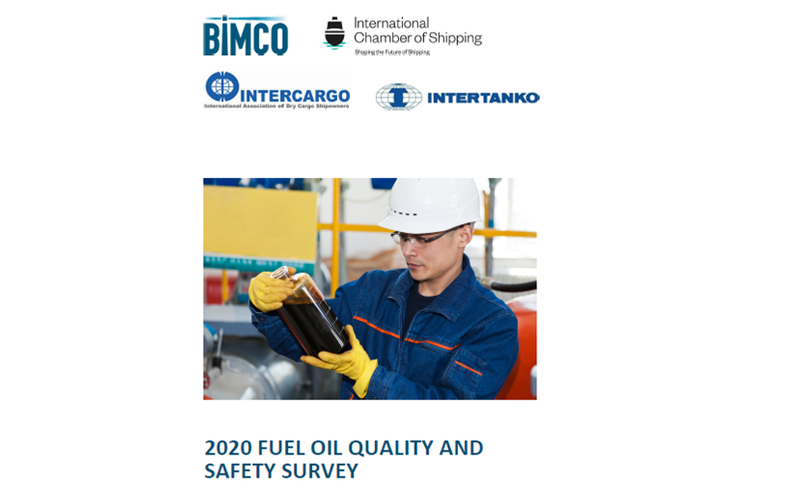An industry survey carried out by BIMCO, International Chamber of Shipping (ICS), INTERCARGO and INTERTANKO into the transition to using very low-sulphur fuel oil (VLSFO) since the beginning of 2020 has found that several issues have arisen for owners and charterers.
Fluctuations in the properties of the VLSFOs being issued in different parts of the world have been one significant factor, the survey found.
The survey focused on issues such as increased sludge discharge, clogging of fuel pipes, preheaters, fuel separators and fuel filters, fuel pumps getting stuck, problems with fuel injection and poor ignition of fuel oil.
Other issues covered included incomplete combustion, wax appearance and an increased wear-and-tear of cylinder liners, all of which could lead to a loss of propulsion and/or black out.
The survey was carried out from February 24th to May 6th this year. It questioned shore-based personnel rather than the ships’ crews. The three most frequent respondents were from technical departments (52.6%), operational functions, such as fleet and vessel management (21.9%), and bunker departments (8.3%). The dataset consists of 192 responses.
Christian Bækmark Schiolborg, Manager, Marine Environment at BIMCO, said that "the survey gives us valuable insight into the magnitude and nature of problems encountered by the industry in the transition to using low-sulphur fuel oil. The industry had widespread experience with how to manage heavy fuel oil, and the survey provides insight into which parameters of the new fuel types are posing the biggest challenges for onboard fuel management”.
The survey indicated global challenges with fuel characteristics and limits being off specifications most frequently when it comes to total sediment, aluminium plus silicon, pour point, ash, flash point, acid number and viscosity.
It also indicated that most common operational problems experienced were increased sludge deposits and wax appearance after switching to the compliant fuel oils (those with a sulphur content not exceeding 0.50%).
The survey also showed that when commercial fuel oil samples were tested after bunkering, sulphur content was among the most frequent parameters to be indicated as off specifications and consequently, an indication of potential non-compliance with MARPOL annex VI.
Key findings:
- 14% of the respondents answered ‘no’ to all ten questions (Qs 2 to 11) regarding off-spec and operational quality issues, which shows that some respondents had not experienced any problems at the time when responding to the survey.
- 62% of the respondents have to some extent experienced increased sludge deposits in the fuel oil system including increased sludge discharge from the ship’s separators.
- 32% of the respondents answered that they had experienced wax appearance in the fuel oil system e.g. in fuel oil tanks, filters etc.
- 31% of the respondents answered that they had experienced operational issues caused by increased wear and tear of cylinder liners, piston rings or other components, assessed to be due to increased amounts of catalytic fines (cat fines) in the fuel oil.
- 22% of the respondents answered that fuel oil had been de-bunkered as a consequence of fuel oil properties.
- 21% of the respondents answered that they had experienced problems with fuel injection, poor ignition or incomplete combustion of the fuel.
- 18% of the respondents answered that they had experienced fuel oil pumps seizures.
- 10% of the respondents answered that they had experienced loss of propulsion and/or black out as a consequence of fuel oil properties.
This article is kindly supplied by Insurance Marine News. If you would like a complimentary trial to the daily Insurance Marine News e-bulletin please email grant.attwell@insurancemarinenews.com.

